Indian Polity and Governance: May 2025 UPSC Current Affairs | Indian Polity for UPSC CSE PDF Download
Punjab-Haryana Water Sharing Dispute
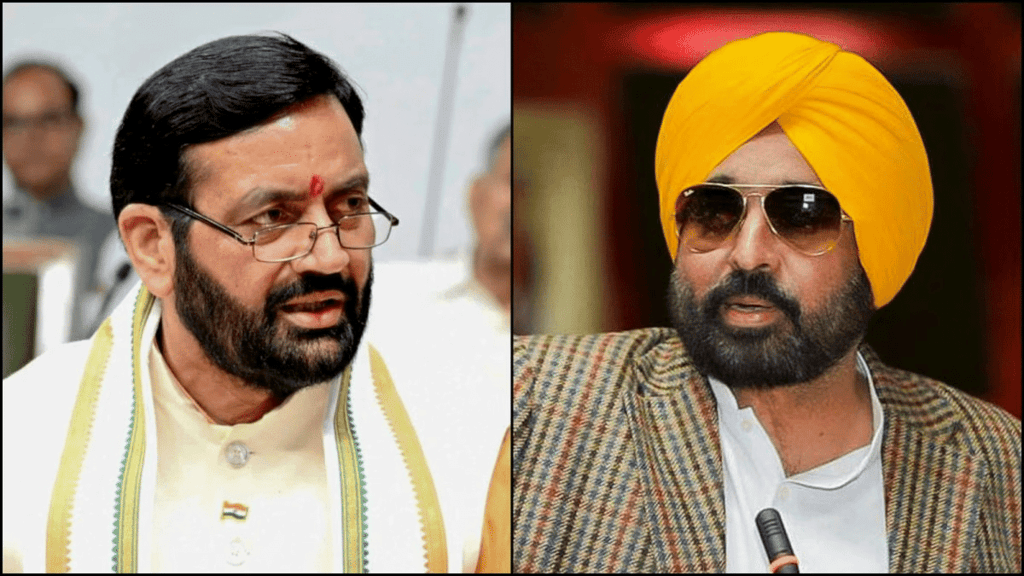
Why in News?
Amid escalating tensions over water sharing, all political parties in Punjab have come together to oppose the Bhakra Beas Management Board’s decision to allocate an additional 4,500 cusecs of water to Haryana. The dispute was ignited by Haryana's demand for increased water supply, which Punjab has contested vigorously.
Key Takeaways
- The dispute escalated on April 23, 2025, when Haryana requested an additional 4,500 cusecs of water from the Bhakra-Nangal project.
- The Bhakra Beas Management Board (BBMP) voted in favor of Haryana's request, leading to Punjab's firm opposition.
- Both states are now considering legal action to secure their respective claims over water rights.
Additional Details
- Trigger for the Standoff: Haryana's demand for 8,500 cusecs of water initiated the conflict, while Punjab referred the matter to BBMP.
- BBMP Voting Outcome: During a BBMP meeting, Haryana, Rajasthan, and Delhi supported the extra water allocation, while Punjab opposed it and refused to open additional sluice gates.
- Historical Background: The Bhakra-Nangal project, initiated in the 1910s, was a significant post-Independence development project aimed at managing river resources.
- BBMP's Role: BBMP oversees the distribution of water from the Satluj and Beas rivers to the respective states and allocates water shares annually based on availability and predictions.
- Current Year’s Water Allocation: For this year, BBMP allocated 5.512 million acre-feet (MAF) to Punjab and 2.987 MAF to Haryana.
- Punjab claims Haryana has already exceeded its quota by 104%, raising concerns over its own declining groundwater levels.
- Haryana's Chief Minister has accused Punjab of political maneuvering and stressed the urgent need for water in drought-affected areas.
- Experts suggest temporary sharing of water for drinking needs but emphasize that state quotas should remain intact for fairness.
- As tensions continue to rise, both states are preparing for potential legal battles while the BBMP's decision remains a focal point of contention in the ongoing water dispute.
Panchayat Advancement Index
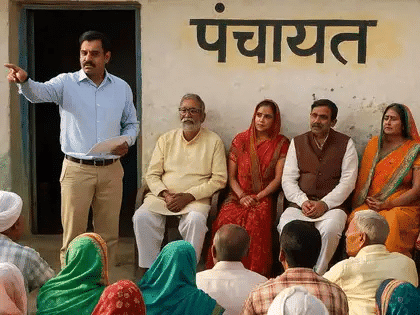
Why in News?
The Panchayat Advancement Index (PAI) 2.0 Portal has been recently launched to enhance the assessment of panchayati raj institutions across India. This initiative aims to promote the holistic development, performance, and progress of over 2.5 lakh Gram Panchayats (GPs).
Key Takeaways
- Developed by the Ministry of Panchayati Raj (MoPR) in collaboration with NITI Aayog and various UN agencies.
- Aligns with the Localization of Sustainable Development Goals (LSDGs) to ensure grassroots implementation.
Additional Details
- Panchayat Advancement Index: A multi-domain index designed to assess and advance the development of panchayats.
- This initiative provides a data-driven framework for evaluating the performance of panchayats, categorizing them based on their PAI scores.
- Performance Categories:Panchayats are classified into five categories based on their PAI scores:
- Achiever: Score of 90 and above
- Front Runner: Score of 75 to below 90
- Performer: Score of 60 to below 75
- Aspirant: Score of 40 to below 60
- Beginner: Score below 40
- Reasons for Introduction:
- To localize SDGs and ensure grassroots-level implementation aligned with the UN's 17 Sustainable Development Goals for 2030.
- Facilitates evidence-based planning to identify development gaps and formulate targeted rural development strategies.
- Strengthens governance by promoting transparency and accountability in panchayat activities.
- Acts as a policy tool to fast-track SDG localization.
- Features of PAI 2.0 Portal:
- Reduced indicators from 516 to 147, enhancing focus and data quality.
- Streamlined data points from 794 to 227 for improved efficiency.
- Auto-integration of data from national portals to lessen manual reporting burdens.
- Enhanced dashboards for better visualization and usability.
- Robust data validation mechanisms to ensure accuracy.
- User-friendly interface simplifying data entry and tracking.
The PAI Portal not only strengthens decentralized governance but also aligns rural development with sustainable goals, enhancing India's capacity for global reporting. This initiative fosters healthy competition among panchayats and promotes transparency through public scorecard displays, ultimately driving equitable and holistic rural growth.
Debate Over Judicial Activism
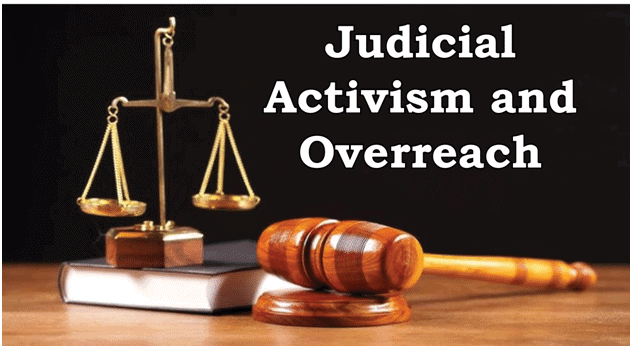
Why in News?
India is currently experiencing an escalating debate regarding the judiciary's increasing influence. Concerns have been raised about 'judicial despotism,' which clashes with the perspective that interventions by the Supreme Court are vital for upholding constitutional values. Recent judgments have sparked discussions about the separation of powers and whether the judiciary has exceeded its constitutional authority.
Key Takeaways
- The debate centers on the balance between judicial activism and judicial restraint.
- Judicial despotism refers to the judiciary overstepping its boundaries, undermining other branches of government.
- Recent Supreme Court rulings have ignited concerns regarding the separation of powers.
Additional Details
- Judicial Despotism: This term describes a scenario where the judiciary, particularly higher courts, exercises excessive or unchecked power, often exceeding its constitutional mandate and undermining the roles of the legislature and executive.
- Key Features:
- Overreach into Other Organs: Courts making laws or intervening in administrative decisions beyond constitutional limits.
- Frequent Use of Extraordinary Powers: For instance, the frequent invocation of Article 142 without clear legal backing.
- Supersession of Democratic Will: When unelected judges override decisions made by democratically elected governments.
- Lack of Accountability: The higher judiciary possesses extensive powers with minimal external accountability, which can lead to authoritarianism if misused.
- Judicial Activism Instances:
- The Supreme Court has issued wide-ranging directives in cases such as mob lynching and the Babri Masjid.
- Directed states to distance liquor shops from national highways to prevent road accidents.
- Provided compensation for victims of the Bhopal gas tragedy (1984).
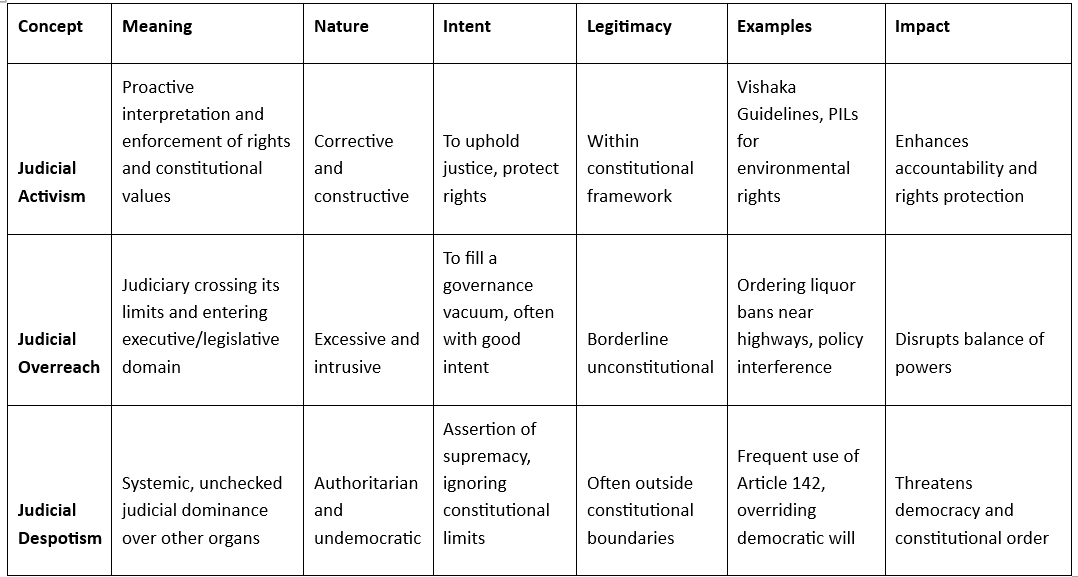
Conclusion
The balance between judicial activism and judicial restraint is crucial in maintaining the integrity of India's constitutional framework. The judiciary must ensure it operates within its designated limits while promoting accountability and transparency.
State of School Education in India
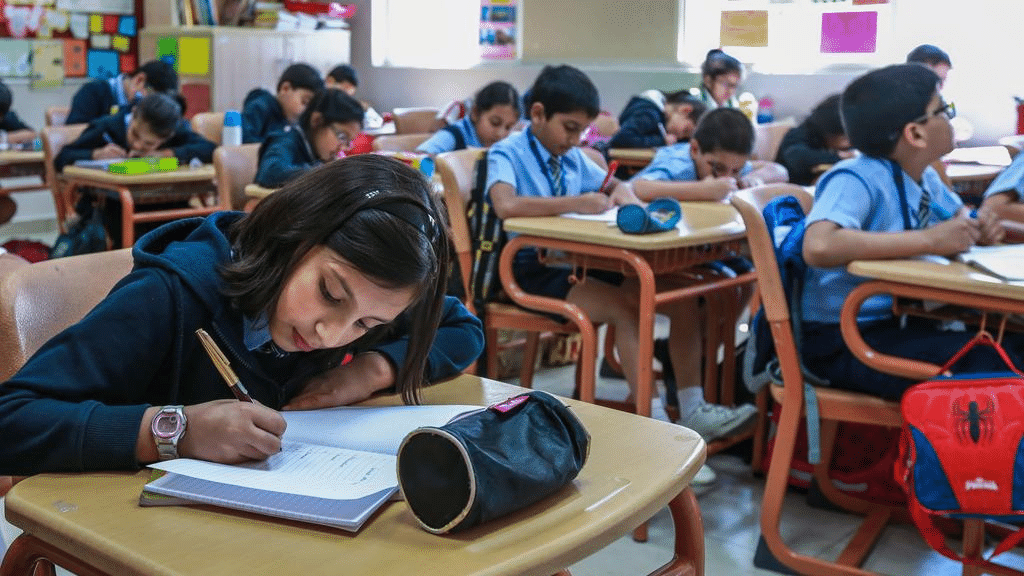
Why in News?
The education system in India is a critical driver of national progress, shaping individuals and fostering economic and social development. School education lays the foundation for learning, equipping students with essential skills and knowledge. Despite significant advancements, the sector faces challenges that require targeted solutions to ensure quality and inclusivity.
Structure of School Education
- Primary Education (Grades 1–5): Focuses on building foundational skills like reading, writing, and basic mathematics to prepare young learners for further education.
- Upper Primary (Grades 6–8): Introduces subjects such as science, social studies, and advanced mathematics to deepen knowledge and critical thinking.
- Secondary Education (Grades 9–10): Prepares students for board exams, emphasizing specialized subjects to build a strong academic base.
- Senior Secondary (Grades 11–12): Offers streams like arts, commerce, and science, guiding students toward higher education or vocational paths.
Government Efforts to Strengthen School Education
- Right to Education (RTE) Act, 2009: Guarantees free and compulsory education for children aged 6–14, aiming to ensure universal access to schooling.
- Samagra Shiksha Abhiyan: Combines schemes like Sarva Shiksha Abhiyan and Rashtriya Madhyamik Shiksha Abhiyan to improve school infrastructure, teacher training, and learning outcomes.
- Mid-Day Meal Scheme: Provides free meals to students in government schools to boost attendance and address malnutrition, benefiting millions of children daily.
Challenges in School Education
- Poor Learning Outcomes: Despite higher enrollment, many students struggle with basic literacy and numeracy. For example, surveys show that a significant percentage of Grade 5 students cannot read Grade 2 texts.
- Inadequate Infrastructure: Many schools lack basic facilities like classrooms, clean toilets, and safe drinking water, especially in rural areas, impacting student attendance and learning.
- High Dropout Rates: Economic pressures, early marriages, and lack of awareness lead to dropouts, particularly among girls. For instance, rural girls often leave school to support household chores.
Higher Education in India
Higher education in India prepares students for professional careers and contributes to research and innovation. While the sector has expanded, issues like accessibility and quality persist, requiring reforms to meet global standards.
Structure of Higher Education
- Universities: Include central, state, private, and deemed universities, offering diverse academic programs. For example, institutions like Delhi University cater to thousands of students annually.
- Colleges: Affiliated with universities, these institutions provide undergraduate and postgraduate courses in fields like arts, science, and commerce.
- Technical and Professional Institutes: Regulated by bodies like AICTE (engineering) and MCI (medical), institutes like IITs and AIIMS produce skilled professionals.
Key Developments in Higher Education
- National Education Policy (NEP) 2020: Promotes multidisciplinary learning, aims to increase the Gross Enrollment Ratio, and encourages research. For example, NEP allows students to pursue flexible degree combinations.
- Digital Platforms: Initiatives like SWAYAM offer online courses, and the National Digital Library provides free access to educational resources, benefiting students in remote areas.
- Skill Development: Industrial Training Institutes (ITIs) and polytechnics train students in vocational skills, bridging the gap between education and job opportunities.
Challenges in Higher Education
- Limited Access: Rural and low-income students struggle to afford or access higher education due to high costs and limited institutions in remote areas.
- Quality Issues: Many institutions lack qualified faculty and proper accreditation, affecting the credibility of degrees.
- Research Constraints: Insufficient funding and infrastructure hinder cutting-edge research, limiting India’s global academic contributions.
Education and Human Development
Education is a key pillar of human development, empowering individuals, reducing inequalities, and driving economic growth. It aligns with global goals like SDG 4 (Quality Education) and supports India’s progress in multiple areas.
Role of Education in Human Development
- Economic Progress: Educated individuals contribute to a skilled workforce, boosting productivity. For example, IT professionals have driven India’s tech industry growth.
- Social Equity: Education empowers marginalized groups, reducing caste and gender disparities. Programs like scholarships for SC/ST students promote inclusivity.
- Health Awareness: Educated individuals make informed health choices, improving life expectancy and reducing diseases like malnutrition.
India’s Achievements in Education
- Human Development Index (HDI): Education improvements have boosted India’s HDI ranking, reflecting better literacy and school enrollment rates.
- Gender Equality: Schemes like Beti Bachao, Beti Padhao encourage girls’ education, narrowing the gender gap in schools.
- Adult Literacy: Programs like Saakshar Bharat have increased adult literacy rates, empowering older populations to participate in economic activities.
Solutions for Educational Improvement
- Infrastructure Investment: Build modern schools and colleges with facilities like labs and libraries, especially in rural areas.
- Teacher Development: Regular training programs to enhance teaching skills, ensuring educators are equipped to deliver quality education.
- Technology Integration: Expand digital classrooms and platforms like EduRev to provide accessible learning resources for all students.
- Public-Private Partnerships: Collaborate with private organizations to improve infrastructure and teaching quality.
- Lifelong Learning: Promote vocational training and skill development to support continuous education for all age groups.
Caste Census in India
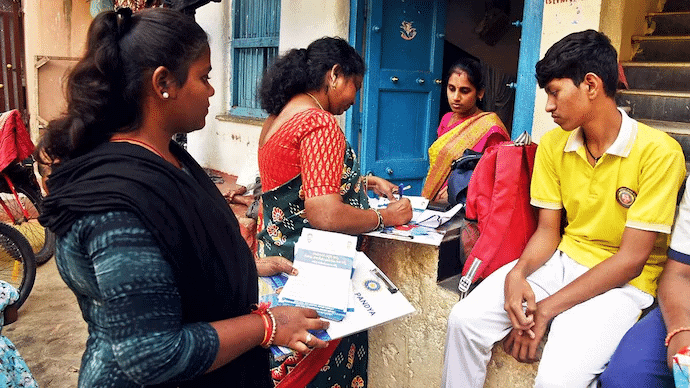
Why in News?
A caste census collects data on caste identities to understand their socio-economic and educational status, aiding equitable policymaking. While it offers significant benefits, it also poses challenges that require careful implementation.
Understanding Caste Census and Surveys
- Census: A national exercise conducted every 10 years to collect demographic, economic, and social data, governed by the Census Act, 1948.
- Caste Census: Involves recording caste identities during the census to analyze the distribution and status of various caste groups. Historically included until 1931, it now covers only SCs and STs.
- Socio-Economic Caste Census (SECC): Conducted in 2011 to collect caste data but not released due to accuracy concerns.
- Caste Survey: State-led initiatives (e.g., Bihar, Karnataka) to gather caste data for local policymaking, as states cannot conduct a census.
Differences Between Census, Caste Census, and Caste Survey
- Legal Authority: Census is backed by the Census Act, 1948; caste census lacks specific laws; caste surveys have no statutory backing.
- Caste Data Collection: Census includes SC/ST data; SECC collected OBC data in 2011 (unreleased); surveys collect state-specific caste data.
- Data Confidentiality: Census data is confidential; SECC data is used for welfare schemes; survey data informs state policies.
Benefits of a Caste Census
- Data-Driven Policies: Provides detailed insights into caste-based disparities, enabling targeted interventions. For example, identifying education gaps among specific castes.
- Reservation Reforms: Updates outdated 1931 data to adjust reservation policies, ensuring benefits reach truly disadvantaged groups.
- Effective Welfare Schemes: Helps allocate resources to marginalized castes, as seen in Bihar’s caste survey revealing 22.6 million people missing food subsidies.
- Social Relevance: Captures caste’s role in Indian society, aiding policies to address inequalities.
- Constitutional Support: Aligns with Article 340, empowering investigations into backward classes’ conditions.
- Commission Objectives: Supports bodies like the NCBC and Justice Rohini Commission for OBC sub-categorization.
- Intersectionality: Highlights overlaps of caste with gender and region for nuanced policies.
- Breaking Myths: Clarifies misconceptions, like claims about caste populations in Karnataka, promoting accurate data.
- Empowering Communities: Encourages new political identities, strengthening democracy through inclusive representation.
Challenges of a Caste Census
- Political Manipulation: Data may fuel caste-based politics, as parties could exploit it for electoral gains.
- Caste Identity Reinforcement: May deepen caste divisions, hindering national unity.
- Reservation Demands: Could spark demands for expanded quotas, challenging the 50% reservation cap.
- Logistical Issues: Complex caste classifications and regional variations complicate data collection.
- Lack of Uniformity: Varying caste definitions across states create inconsistencies.
- Stigmatization Risks: Public disclosure of caste may lead to discrimination, discouraging honest responses.
Way Forward for Caste Census
- Standardized Categories: Create a unified caste list with expert input to address regional naming differences.
- Enumerator Training: Train staff to handle caste data sensitively, ensuring voluntary participation.
- Data Accuracy: Involve communities and verify data to ensure reliability.
- Public Awareness: Educate citizens on the census’s purpose to reduce privacy concerns and boost participation.
- Data Protection: Enforce strict laws to safeguard caste data from misuse.
- Prevent Political Misuse: Set legal safeguards to ensure data supports inclusive development, not division.
Reviving Private Members’ Bills (PMBs)
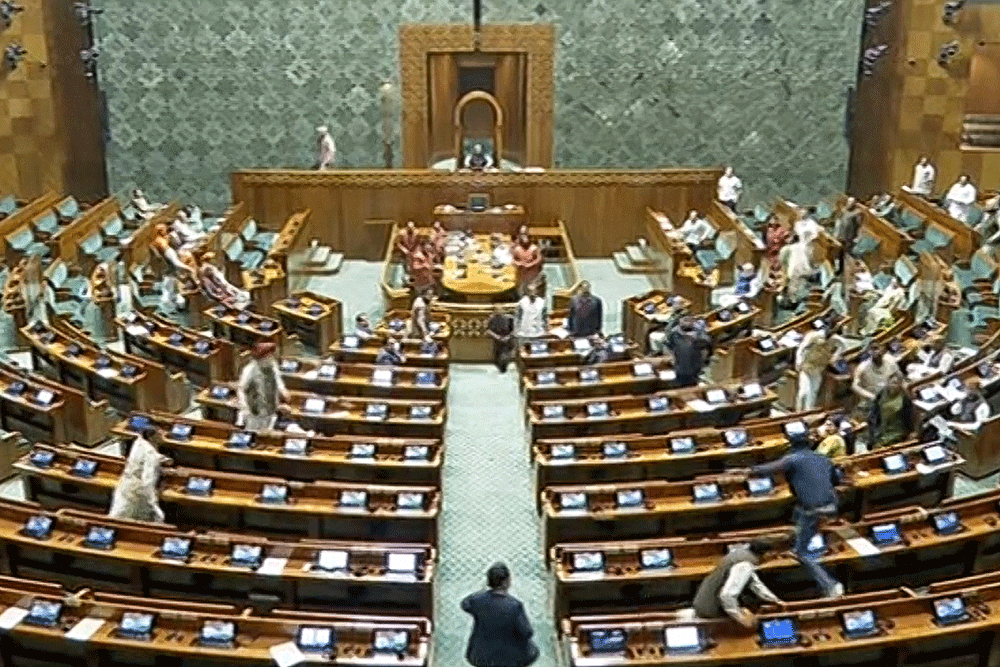
Why in News?
Private Members’ Bills (PMBs) allow non-minister MPs to propose legislation, reflecting diverse perspectives. Their decline in parliamentary discussions highlights the need for reforms to strengthen democratic participation.
Understanding Private Members’ Bills
- Definition: Bills introduced by MPs who are not ministers, reflecting personal or constituency-driven ideas.
- Procedure: Introduced on Fridays, following the same legislative process as government bills—reading, discussion, voting, and Presidential assent.
- Current Status: Only 14 PMBs passed since 1947; none since 1970. In 2024, 64 PMBs were introduced, but none discussed.
Importance of PMBs
- Democratic Voice: Allows MPs to address unique issues, like Supriya Sule’s “Right to Disconnect” Bill for work-life balance.
- Policy Innovation: Inspires government laws, e.g., Tiruchi Siva’s Transgender Rights Bill led to the 2019 Act.
- Ruling Party Freedom: Enables ruling MPs to propose independent ideas, like healthcare for seniors.
- Parliamentary Oversight: Encourages debate beyond party lines, strengthening democracy.
Reasons for PMB Decline
- Government Dominance: Government business overshadows PMB time, e.g., budget discussions in 2024.
- Session Disruptions: Adjournments reduce PMB discussion time, with two Fridays lost in 2024.
- Anti-Defection Law: Discourages MPs from proposing bills against party lines.
- Low MP Engagement: Many MPs skip Friday sessions for constituency visits.
- Speaker’s Control: Arbitrary scheduling limits PMB discussions despite available session time.
Reforms to Revive PMBs
- Protected PMB Time: Make Friday slots non-negotiable except in emergencies.
- Midweek Scheduling: Move PMB discussions to Wednesdays for better attendance.
- Priority Committee: Form a panel to prioritize impactful PMBs for discussion.
- Extended Hours: Allow longer parliamentary sessions to accommodate PMBs.
- Digital Tracking: Create online dashboards to monitor PMB progress, enhancing transparency.
Digital Access as a Fundamental Right
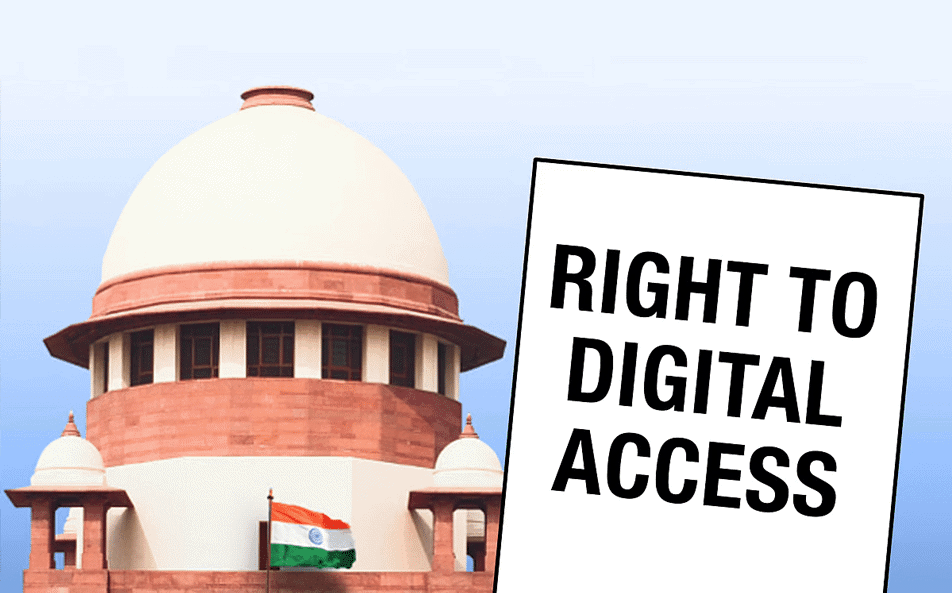
Why in News?
The Supreme Court has recognized digital access as part of the right to life and liberty under Article 21, emphasizing the need for inclusive digital systems to ensure equitable access to services for all, especially marginalized groups.
Supreme Court’s Ruling on Digital Access
- Constitutional Mandate: The court ruled that the state must ensure inclusive digital access to e-governance and welfare services, vital for a dignified life.
- KYC Directives: Issued 20 guidelines to make KYC processes accessible, particularly for people with disabilities and marginalized groups.
- Context: The ruling responded to petitions from acid attack survivors and visually impaired individuals facing barriers in digital KYC, like facial recognition.
Challenges for Marginalized Groups
- Digital Barriers: People with disabilities struggle with inaccessible digital tools, e.g., facial recognition systems excluding acid attack survivors.
- Exclusion from Services: Inability to complete digital KYC prevents access to banking and welfare, deepening social exclusion.
- Digital Divide: Rural populations, seniors, and linguistic minorities face issues like poor internet and lack of regional language content.
Addressing the Digital Divide
- Constitutional Duty: The court redefined Article 21 to include digital access as essential for education, healthcare, and governance.
- Substantive Equality: Emphasized inclusive digital transformation to ensure fairness for all citizens.
- Specific Barriers: Inaccessible websites and apps hinder people with disabilities, while rural areas lack reliable internet connectivity.
Need for Inclusive Digital Systems
- Government Responsibility: The state must ensure universal digital access, especially for vulnerable groups, under constitutional mandates.
- Impact on Equity: Inclusive digital systems reduce disparities, enabling access to essential services like education on platforms like EduRev.
- Systemic Inclusion: Addressing the digital divide ensures marginalized groups participate fully in governance and welfare programs.
By addressing these challenges through targeted reforms, India can build an inclusive education system, leverage caste data for equitable policies, revive PMBs for democratic participation, and ensure digital access as a fundamental right, paving the way for a more equitable and prosperous future.
PM E-DRIVE Scheme
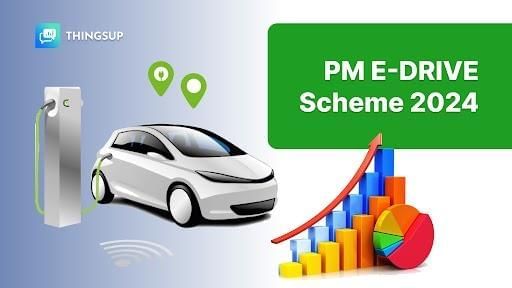
Why in News?
Recently, the Government of India has allocated ₹2,000 crore under the PM E-DRIVE scheme to establish 72,000 public electric vehicle (EV) charging stations across the country. This initiative is part of a broader effort to promote electric mobility and reduce carbon emissions.
Key Takeaways
- The PM E-DRIVE (Electric Drive Revolution in Innovative Vehicle Enhancement) scheme is designed to accelerate electric mobility in India.
- Total financial outlay for the scheme is ₹10,900 crore, with implementation planned from 2024 to 2026.
Additional Details
- Objectives:The scheme aims to:
- Promote the adoption of electric vehicles (e-2Ws, e-3Ws, e-buses, e-ambulances, and e-trucks).
- Develop a robust national EV charging grid to alleviate range anxiety and ensure smooth mobility across cities and highways.
- Provide direct demand incentives through Aadhaar-authenticated e-vouchers sent to buyers' mobile numbers after the purchase of an EV.
- BHEL as Nodal Agency:Bharat Heavy Electricals Limited (BHEL) has been designated as the nodal agency responsible for:
- Demand aggregation for charging infrastructure.
- Development of a Unified EV Super App for users, which will include features like real-time charger availability, slot booking, payment integration, and progress tracking.
This initiative not only aims to improve air quality and energy security by reducing dependence on fossil fuels but also seeks to enhance public transport and create job opportunities within the green mobility sector.
Supreme Court Directives on Consumer Dispute Forums

Why in News?
The Supreme Court has instructed the central government to provide a response within three months regarding the establishment of a permanent forum to address consumer disputes. This directive is a reaction to a petition that pointed out deficiencies in the enforcement of the Consumer Protection Act, 1986.
Key Takeaways
- The proposed forum will consist of permanent members, including both administrative personnel and presiding officers.
- There is a suggestion to allow sitting judges to oversee the forum.
- The Union Government may enhance the number of Consumer Tribunals/Courts.
Additional Details
- Appointment Rules & Tenure: Non-judicial members of State and District Commissions will be selected based on a written exam and viva voce, conducted in consultation with State Service Commissions. The tenure is fixed at five years, although current appointments last for only four years; the judgment is to be applied prospectively.
- Selection Committee Composition: More than 50% of the Selection Committee members must come from the judiciary to ensure a fair selection process.
- Security of Tenure & Efficiency: Permanent appointments are vital for enhancing the efficiency and functionality of consumer justice delivery, ensuring timely and qualitative resolution of disputes.
- The Centre is required to file an affidavit regarding the feasibility of permanent forums within three months and notify new rules incorporating the Court's directives within four months.
The establishment of permanent consumer dispute bodies is essential for ensuring continuity and stability, addressing systemic backlogs, enhancing professionalism, and responding to the growing complexity of consumer disputes in an increasingly digital economy.
Key Legislations for Consumer Rights Protection
- Consumer Protection Act, 1986: This act established consumer councils and forums for dispute resolution and protected consumers against adulterated goods, misleading advertisements, and unfair trade practices. It granted six fundamental consumer rights.
- Consumer Protection Act, 2019: This act replaced the 1986 Act to tackle modern challenges, expanding coverage to online commerce and product liability while establishing the Central Consumer Protection Authority (CCPA).
- Bureau of Indian Standards (BIS) Act, 2016: This act ensures product safety and quality through mandatory certification and allows for product recalls and penalties for non-compliance.
- Legal Metrology Act, 2009: This act ensures accuracy in weights and measures used in trade, promoting fair practices and market transparency.
About Central Consumer Protection Authority
- Regulatory Body: The CCPA was established under Section 10(1) of the Consumer Protection Act, 2019, to manage matters affecting consumer rights.
- Nodal Ministry: The Ministry of Consumer Affairs oversees the CCPA, which is led by a Chief Commissioner and supported by two commissioners focused on goods and services.
- The CCPA also features an Investigation Wing headed by a Director General, and District Collectors possess the authority to investigate violations related to consumer rights.
Annual Review of State Laws 2024
Status of Legislative Assemblies in India
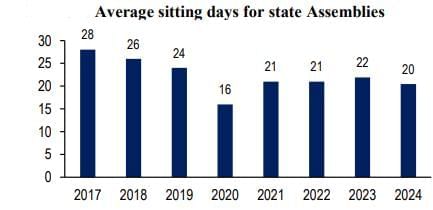
Why in News?
A report titled by PRS Legislative Research, a non-partisan think tank, reveals that India’s state legislative assemblies are functioning with alarmingly low productivity.
Key Takeaways
- In 2024, state assemblies met for an average of only 20 days, a decline from 28 days in 2017 and even lower at 16 days during the pandemic year (2020).
- None of the states met their minimum sitting day targets from 2017 to 2024.
- Odisha and Kerala had the highest sittings in 2024 at 42 and 38 days respectively, while larger states like Uttar Pradesh and Madhya Pradesh only met for 16 days.
- 8 state assemblies are currently without a Deputy Speaker, with Jharkhand lacking one for over 20 years.
- States passed an average of 17 bills in 2024, with over 51% passed on the same day they were introduced, often without debate.
Additional Details
- Weakening of Democratic Deliberation: Legislative assemblies are designed to discuss laws, budgets, and public issues. However, low productivity undermines this role, as shown by the fact that nearly 44% of the 583 bills tabled in state assemblies were passed within a day, limiting informed debate.
- Decline in Legislative Oversight: Assemblies often fail to hold the executive accountable due to fewer sittings, which reduces scrutiny over public expenditure and departmental performance.
- Poor Quality of Legislation: In many states, bills are passed without review by the Public Accounts Committee, leading to poorly drafted laws vulnerable to implementation challenges.
- Delayed or Arbitrary Governance: Frequent delays in granting assent by Governors raise concerns about governance quality, compounded by reliance on ordinances that bypass legislative scrutiny.
- Overlooking Local Aspirations: The inaction of state legislatures on crucial areas such as education, health, and agriculture delays essential reforms.
How can the Productivity of State Legislative Assemblies be Enhanced?
- Fix Minimum Sitting Days: The National Commission to Review the Working of the Constitution recommends a minimum of 50 sitting days for assemblies with fewer than 70 members and 90 days for larger assemblies.
- Strengthen Committee System: Institutionalizing ad hoc Select Committees and Standing Committees can lead to more informed legislation by improving stakeholder engagement.
- Promote E-Governance and Transparency: Implementing the National e-Vidhan Application (NeVA) can digitize legislative processes and enhance citizen participation.
- Review of Laws by the Legislature: Regular reviews of laws ensure they remain relevant and effective, helping to correct poorly drafted legislation.
- RTI and Bilingual Accessibility: Ensuring assembly websites are updated and available in multiple languages will improve public access and understanding.
The steady decline in productivity and oversight in state legislatures needs urgent attention. By implementing these reforms, legislative assemblies can enhance their effectiveness and better serve the public.
A PIL by Vidhi Centre for Legal Policy Seeks Compulsory Inclusion of NOTA in Elections
Why in News?
The Public Interest Litigation (PIL) submitted by the Vidhi Centre for Legal Policy aims to ensure that the option of NOTA (None of the Above) is mandatory in all elections, including those with a single candidate. The goal is to uphold the voters' right to dissent.
Key Takeaways
- NOTA Defined: NOTA allows voters to reject all candidates on the ballot while still participating in the election process.
- Origin: Introduced in 2013 following a Supreme Court ruling, which recognized a voter’s right not to vote while maintaining secrecy.
- Application: Available in Electronic Voting Machines (EVMs) across all elections conducted by the Election Commission of India (ECI).
- Supreme Court Stand: Recognized NOTA as a constitutional right under the freedom of expression.
- Election Commission’s Position: Opposes mandatory NOTA due to the rarity of uncontested elections, citing operational constraints.
Additional Details
- Supreme Court Ruling: The court ruled that NOTA must be included in EVMs to enhance voter autonomy.
- Election Commission's Arguments:
- Only six Lok Sabha elections since 1971 had uncontested candidates.
- Only nine winners have been unopposed since 1952.
- Making NOTA binding would necessitate amendments to the Representation of the People Act, 1951, and the Conduct of Election Rules, 1961.
- Arguments For and Against Binding NOTA:
- Empowers voters to express dissatisfaction, particularly in uncontested elections.
- Currently, NOTA serves a symbolic purpose with minimal impact, averaging about 1% usage in Lok Sabha elections since 2014.
- Could incentivize political parties to field better candidates.
- Requires significant legal reforms and may lead to repeated elections if NOTA receives a majority of votes.
- Electoral Reforms Needed:
- Minimum Vote Threshold: Establish a minimum percentage of votes required for a candidate to be elected, ensuring that a single candidate cannot win without adequate voter support.
- Making it Legal: Implement provisions for mandatory re-elections if NOTA receives a significant percentage (e.g., 10%-15%) of total votes.
- Regular Review: Continuous analysis of NOTA trends can help assess public dissatisfaction and inform future electoral reforms.
- Public Awareness: Educating voters on NOTA's purpose and impact is crucial for strengthening democratic engagement.
In conclusion, the inclusion of NOTA in elections is a critical aspect of upholding democratic values and voter rights, and the proposed reforms could enhance electoral accountability and participation.
Mizoram: India’s First State to Achieve Full Functional Literacy
Mizoram has surpassed a 95% literacy rate, achieving 98.20% according to the PLFS Survey 2023-24. This level of literacy qualifies as Full Literacy as defined by the Ministry of Education.
Functional Literacy
- Functional Literacy refers to the ability to read, write, and perform basic numeracy skills at a specified level.
ULLAS - Nav Bharat Saaksharta Karyakram or New India Literacy Programme (NILP)
- Defined Literates: Learners who can read, write, perform basic mathematics, and possess digital and financial literacy, not just the ability to sign or write their names.
- Type: Centrally Sponsored Scheme in line with the National Education Policy (NEP) 2020.
- Duration: From FY2022-23 to 2026-27.
- Ministry: Ministry of Education.
- Target Group: Adults aged 15 and above from all backgrounds who missed formal schooling.
- Components: Foundational Literacy and Numeracy, Critical Life Skills, Basic Education, Vocational Skills, and Continuing Education.
- Implementation: Through volunteerism, promoting social responsibility and a sense of duty or ‘Kartavya Bodh’.
- Samajik Chetna Kendras: These are established by utilizing available space in schools, local cultural centers, community halls, etc., with schools acting as the unit of implementation.
- Use of Regional Languages: Educational content is accessible via the DIKSHA Portal and the ULLAS Mobile App/Portal in regional languages.
- Assessment & Certification: The Foundational Literacy and Numeracy Assessment Test (FLNAT) is conducted twice a year or on demand at local schools.
|
151 videos|780 docs|202 tests
|
FAQs on Indian Polity and Governance: May 2025 UPSC Current Affairs - Indian Polity for UPSC CSE
| 1. What is the Punjab-Haryana water dispute about? |  |
| 2. What role does the Bhakra Beas Management Board play in the dispute? |  |
| 3. What are the implications of the Panchayat Advancement Index (PAI) 2.0 Portal on governance in Punjab and Haryana? |  |
| 4. How does judicial activism influence the Punjab-Haryana water dispute? |  |
| 5. What recent developments have escalated tensions between Punjab and Haryana regarding water resources? |  |

















